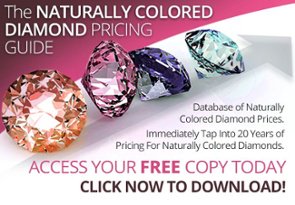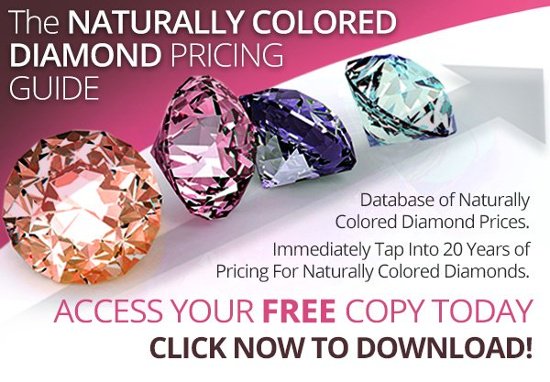We often see the terms Fancy Colored Diamonds (FCD) in auctions, on certificates, in articles, and in collections but what does this really mean?
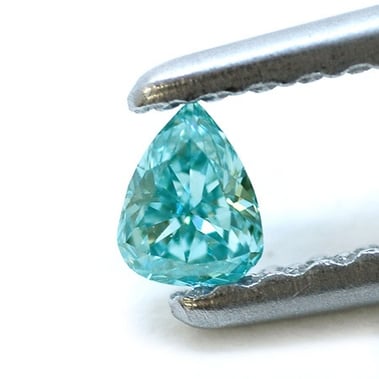
In this article we will be exploring:
- The 27 possible color variations for diamonds
- How the most popular colored diamonds get their hue
- How color intensity and hue affect value
- The different kinds of Tones and Saturation
- The true meaning of a Fancy Diamond
The Colors of an FCD
Fancy Colored Diamonds can come in 12 main colors: Red, Orange, Yellow, Green, Blue, Purple, Violet, Pink, Black, Gray, Brown, and White. There has been some speculation that there might be 14 main color categories, including the Chameleon diamonds and the White diamonds. The latter category is not to be confused with colorless diamonds; white is indeed a color category.
How Is a Colored Diamond Formed?
Fancy Color Diamonds have recently begun to gain significant traction, especially among investors. We know they can hold significant long-term value, but what else is known about them? How do they get their beautifully unique colors?
Let’s start with the basics, diamonds are formed when kimberlite deposits are caught in the flow of a volcanic eruption, bringing them closer to the Earth’s surface. The intense heat and pressure cause carbon atoms to fuse in a specific molecular structure and create the stone, but it doesn’t stop there. There are a plethora of other elements present in this process, including nitrogen and boron, that can be fused (or “included”) in the diamond’s carbon structure. This is what causes a diamond to have a certain color.
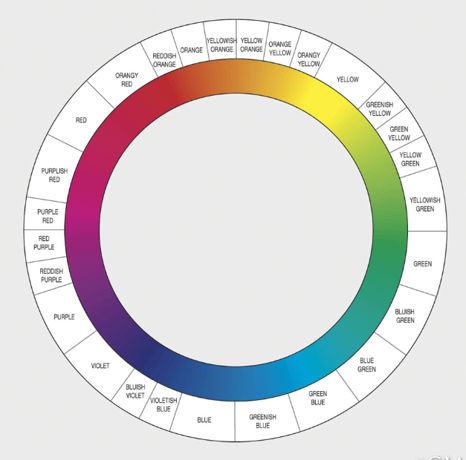
Image Source: GIA
The above image depicts all 27 possible colors a naturally colored diamond can be found in.
Each color is a result of a unique process (or combination of processes.) While the origin of most colors is known, many are still speculated by professionals:
- Red, purple and pink diamond colors are thought to be caused by deformities in the stone’s crystal lattice as a result of immense pressure during the gem’s formation.
- Yellow and brown diamonds are caused by the inclusion of nitrogen.
- Green diamonds are formed after the stone has been exposed to radiation for a period of time.
- Blue diamonds get their color due to the inclusion of boron.
- Black diamonds are caused by an infinite number of scratches, or inclusions, that are inside the diamond.
- Gray diamonds are formed when there is a hydrogen inclusion in the stone’s structure.
Of course, color and rarity go hand in hand, as certain elements and/or phenomena are more common/rare than others. For instance, nitrogen is much more abundant than boron leading to yellow colored diamonds being more commonly found than blue diamonds.
Color Intensity
While a certain color category might be rare, the various shades of color within that category also play a significant role in the stone’s overall value.
Hue
As we saw with color modifiers, it is possible for diamonds to exhibit more than one color. Color modifiers are known as the secondary (or sometimes even tertiary) hues which modify the main color of the diamond.
These colors are always denoted in the stone’s name and come before the main color category.
For more information on color modifiers and how they affect a diamond’s value check out this post.
What Are The Tones of a Diamond?
Similar to the definition given in art, the “tone” of a diamond’s color can be defined as the relative differences in light and dark in the stone’s hue.
The different tones are:
- Very Light
- Light
- Medium Light
- Medium
- Medium Dark
- Dark
- Very Dark
What Does Color Saturation Mean?
Analogous to the saturation in a picture taken from a digital camera, “saturation” can be defined as the strength and the depth of the diamond’s color.
The different saturations are:
- Fancy Light
- Fancy
- Fancy Intense
- Fancy Vivid
- Fancy Deep
- Fancy Dark
Together, tone and saturation can be used to describe the entirety of a diamond’s color, formulating the intensity grading we are used to seeing on certifications, auctions, and descriptions:
- Faint
- Very Light
- Light
- Fancy Light
- Fancy
- Fancy Intense
- Fancy Vivid
- Fancy Deep
- Fancy Dark
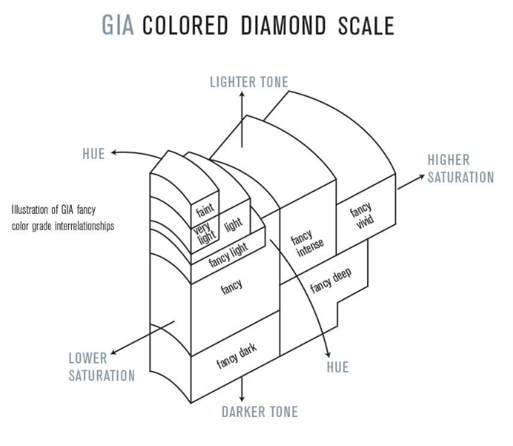
Image Source: GIA
What Are Fancy Diamonds
There is a common misconception of people thinking that fancy and fancy colored diamonds are the same, but in fact, they are referring to 2 different things. Fancy diamonds
This term is mainly reserved for colorless stones. It would not make sense for a cushion oval-shaped green diamond to be referred to as a ‘
Note: If you are going to be talking with a diamond expert, it is important to use the above terms correctly so that there will be no confusion as to what is being talked about.
Do you have any questions? Let us know! And as always, feel free to follow us on Twitter and LinkedIn!
For more insight on colored diamonds and investing be sure to check out the links below:
- Argyle Pink Jubilee
- Red Diamonds – Everything You Wanted To Know
- Do You Have This Alternative Investment Asset In Your Portfolio?
- Color Modifiers in Fancy Colored Diamonds: How Do They Affect Value?
- Colored Diamonds Investment - 6 Tips You Need To Know
- The Dresden Green: The Most Historic Green Diamond
- Investing in Natural Pink Diamonds: What You Need to Know

